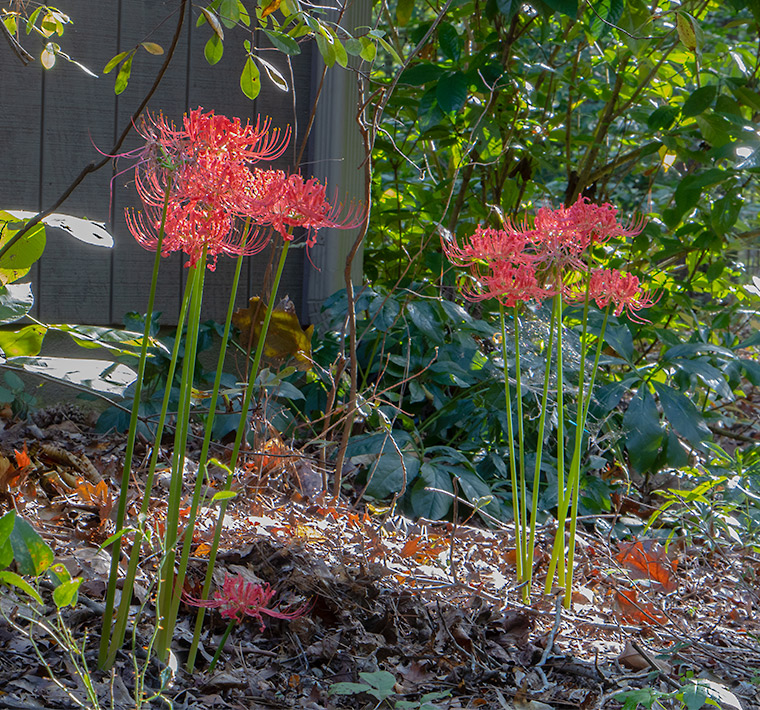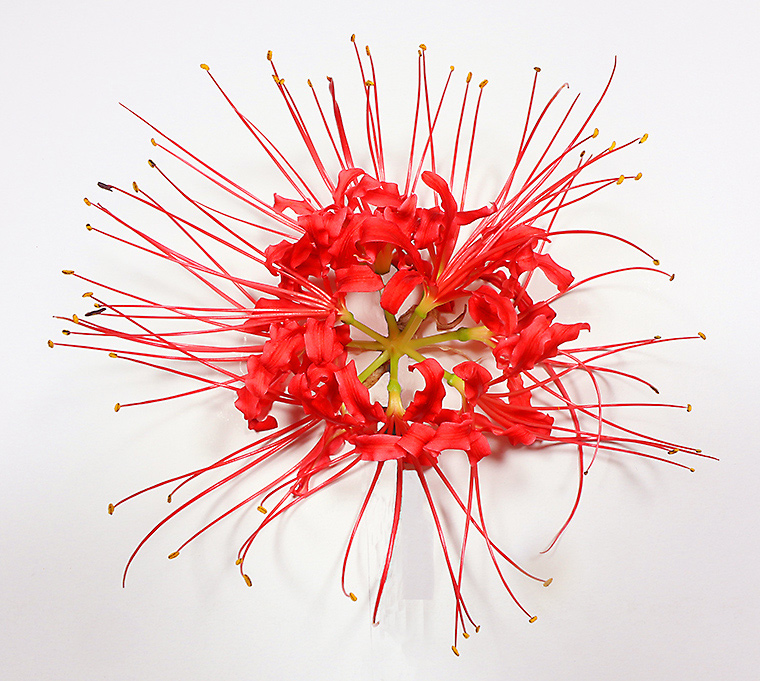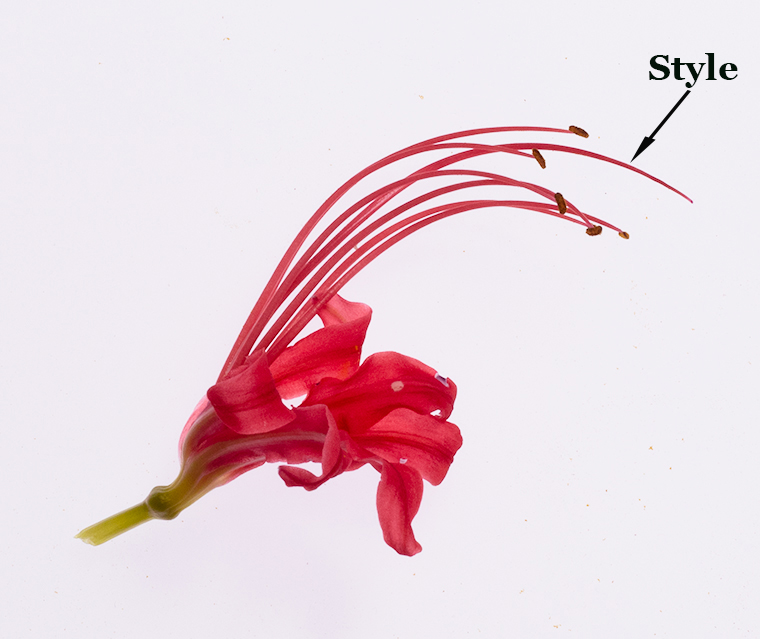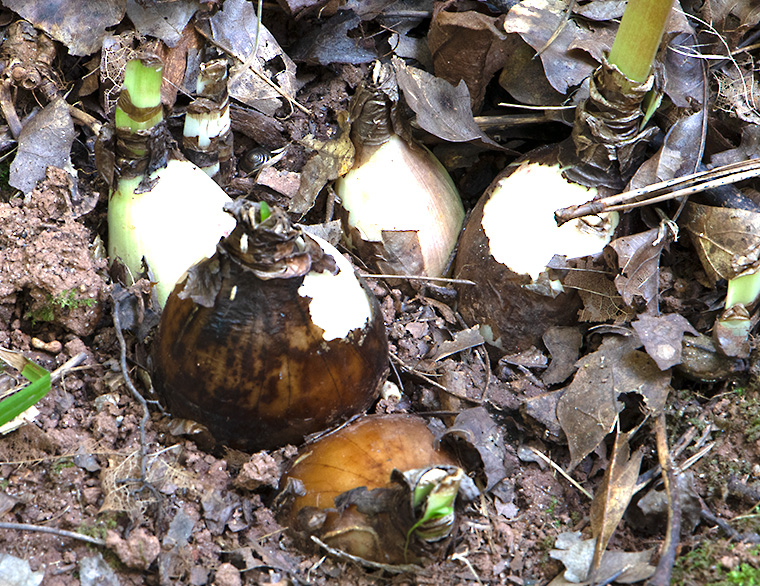
What a nice splash of color that suddenly appeared along the front of our house. They appeared so unexpectedly that one might say they were a suprise! In fact, one of the common names for these flowers is “Surprise Lilies”. In this species, which is Lycoris radiata, the Red Spider Lily, the flower stalks appear first, and the leaves appear only after the flowers have faded away. Another common name for this species is “Naked Ladies”. My first thought for the title of this post was “Naked Ladies”, but then I realized that that title might attract people expecting something different from the material actually presented here. Other common names include “Miracle Lily”, “Resurrection Lily”, and “Hurricane Lily”.
Actually, Surprise Lilies are not Lilies at all. Instead of being in the family Lilaceae they are in the family Amaryllidaceae. So they rightfully should be called “Suprise Amaryllises”. But that is quite a mouthful so I am sure they will continue to be called “Surprise Lilies”.
The genus Lycoris is native to Southeast Asia, and it contains about fifteen species. They occur naturally in China, Japan, Korea, Vietnam and other adjacent countries. The Red Spider Lily was introduced into North Carolina from Japan in 1854. ( Japanese ports had been closed to foreign trade until Captain Matthew Perry and the U.S. Navy forced open some Japanese ports in 1853). A Captain William Roberts is said to have brought back three bulbs of the Red Spider Lily for his niece. She found that flower stalks did not appear until after Fall rains, and the flowering stalks grew very quickly from the bulbs, hence the name “Surpise Lily”. Since that time, and with subsequent intoductions, Surprise Lilies have become naturalized in several states in the Southeastern U.S.. Another species, L. squamigera, is commonly available in plant nurseries. It is thought to be a hybrid between two other species of Lycoris. Flowers in this species come in a variety of colors, including white and pink.

I cut the top off one of the flowering stalks to get this view. It shows that there are six flowers arranged in a radial pattern. The very long filaments with stamens at their ends and the even longer styles protrude from each flower. The following photograph will enable you to distinguish them.

This view of one of the flowers shows that there are six filaments with stamens containing pollen at their ends. The longest structure, which protrudes furthest to the right is the style (female portion of the plant). In order for fertilization to take place pollen would have to be deposited on the stigma, which is at the tip of the style. In this case the stigma is not apparent as a separate structure. Red Spider Lilies that we see in this country are sterile triploids, so they have to be propagated by bulbs.

The flowering stalks of Surprise Lilies come from bulbs that are barely in the ground. If the bulbs are planted too deeply, flowers may notl be produced. In this species the flowering stalks appear first. The leaves only appear after the flowering stalks have died back. The upper right portion of this photograph shows a bulb with an emergent flowering stalk.
The bulbs of Lycoris species are very poisonous. In Japan, they have been used around homes and rice paddies to keep mice and other pests at bay.
Discover more from A Naturalist's Journal
Subscribe to get the latest posts to your email.

Thanks Gary! Hope you and your wife are doing well.